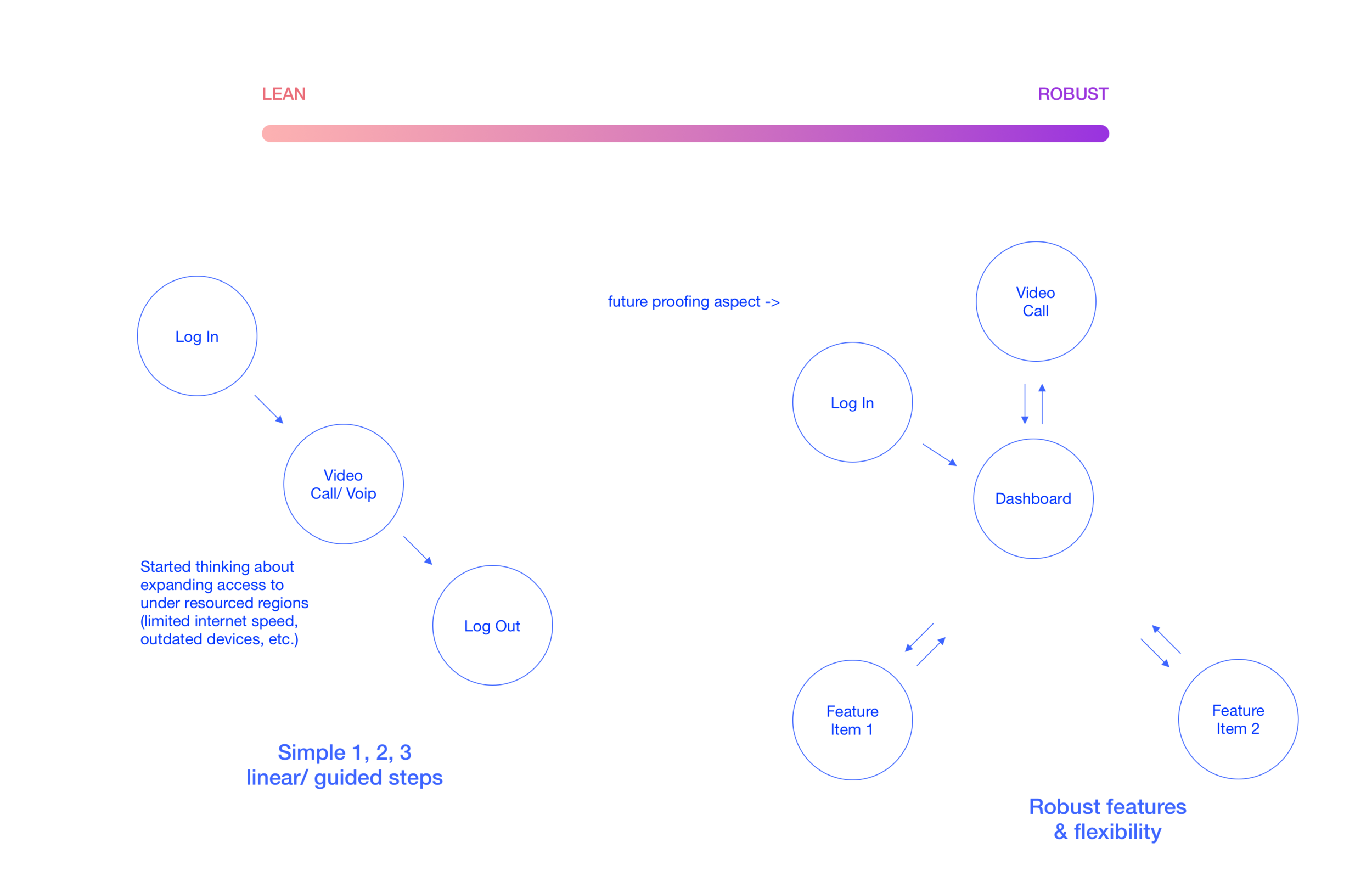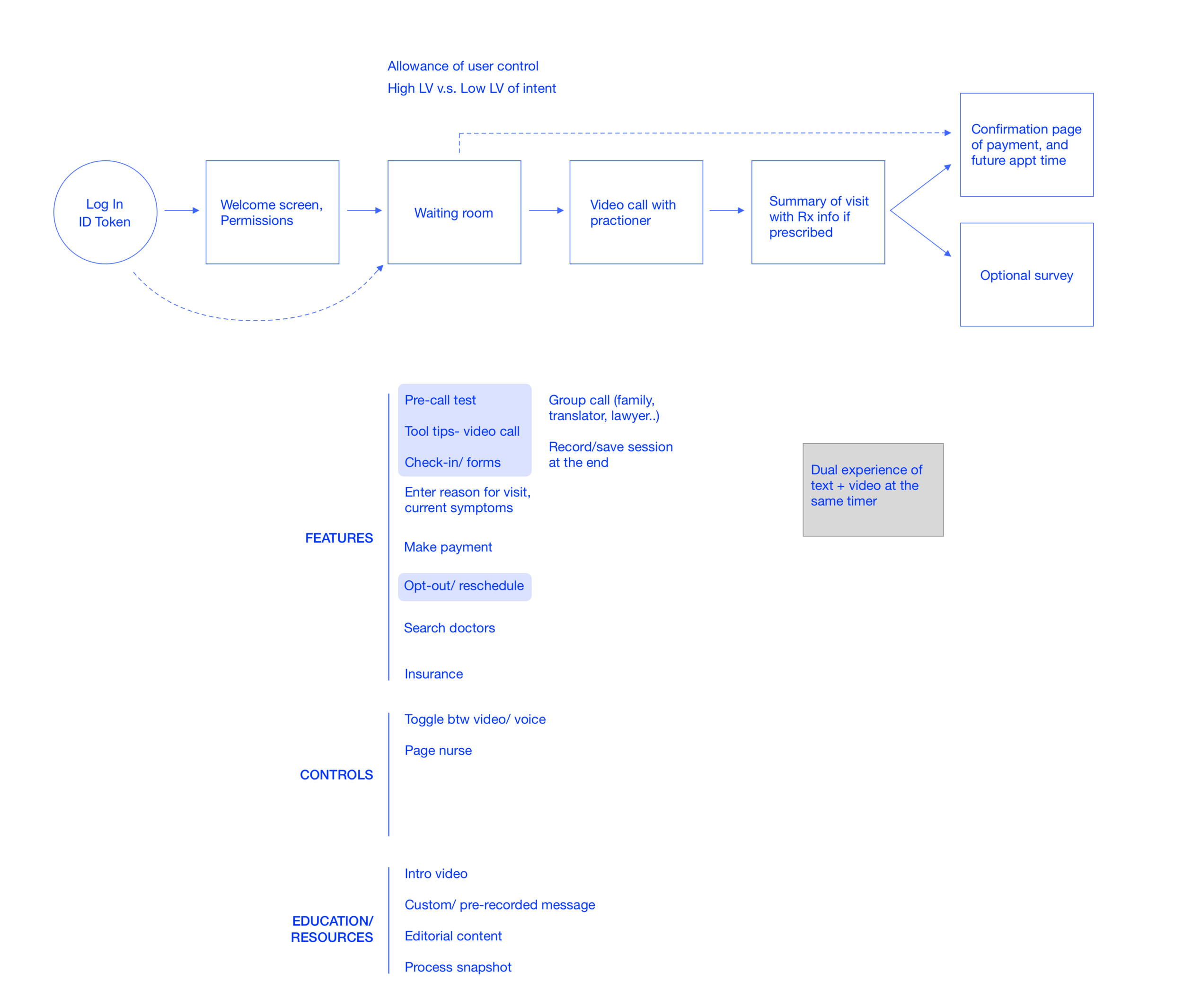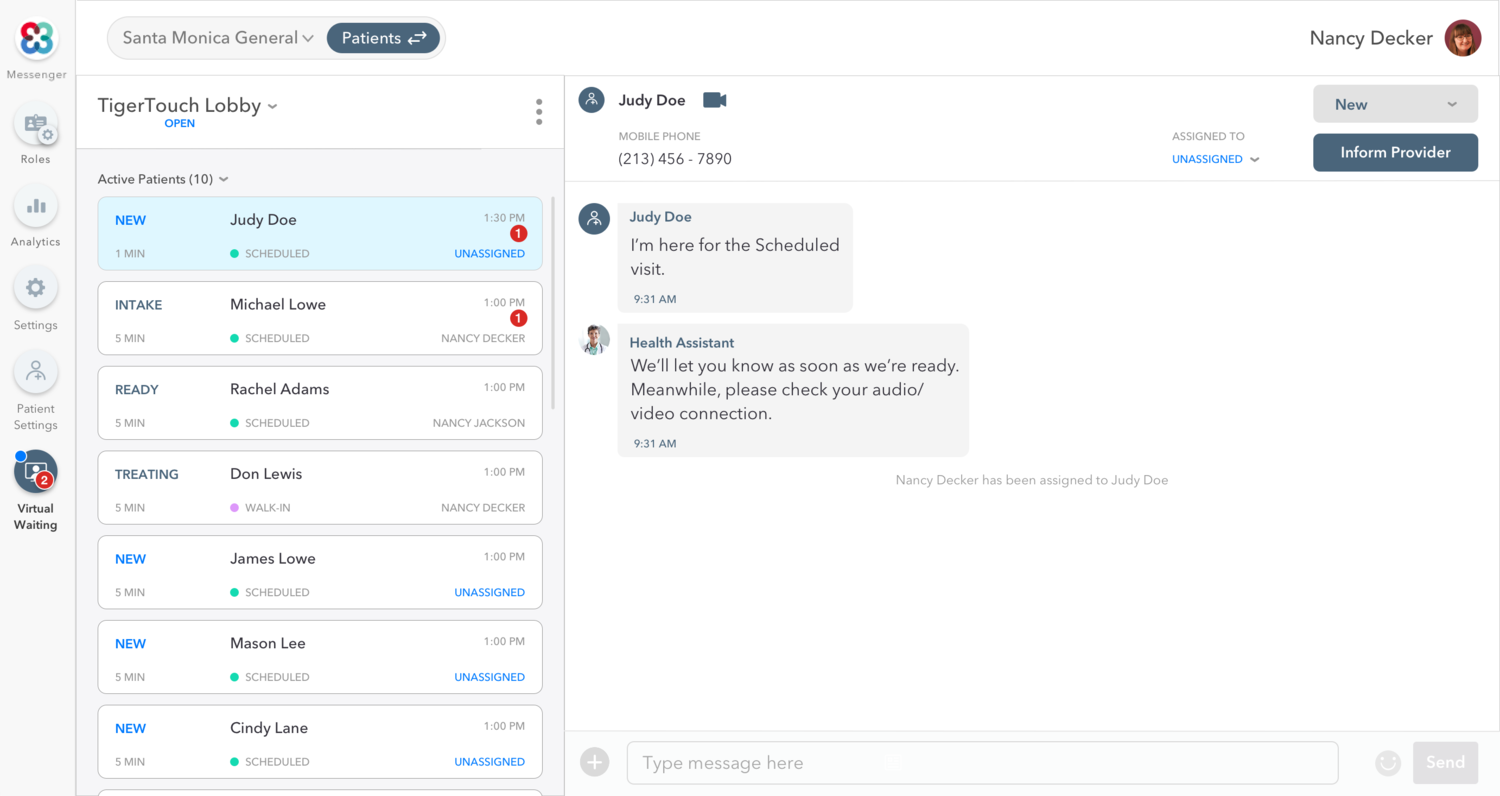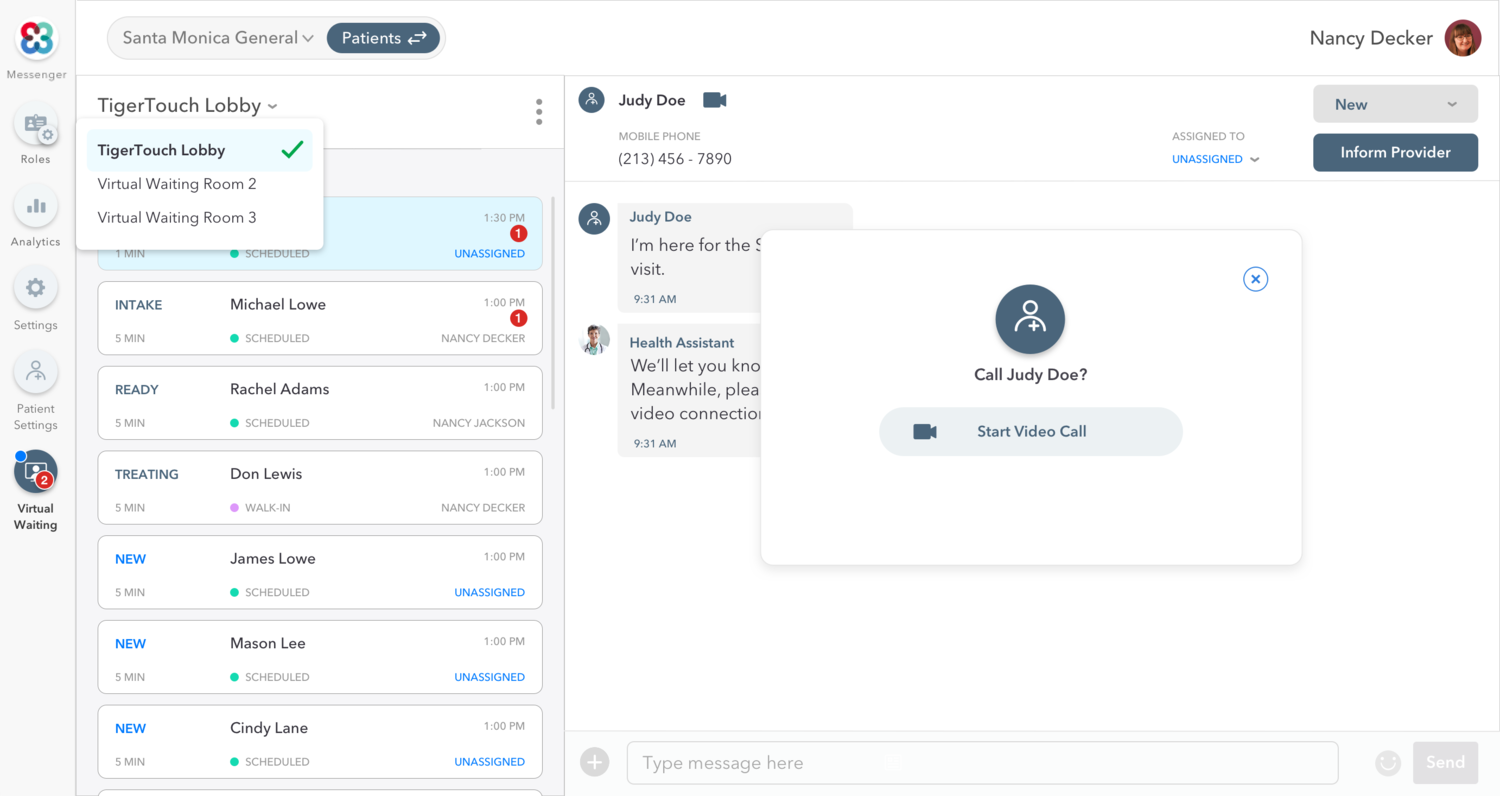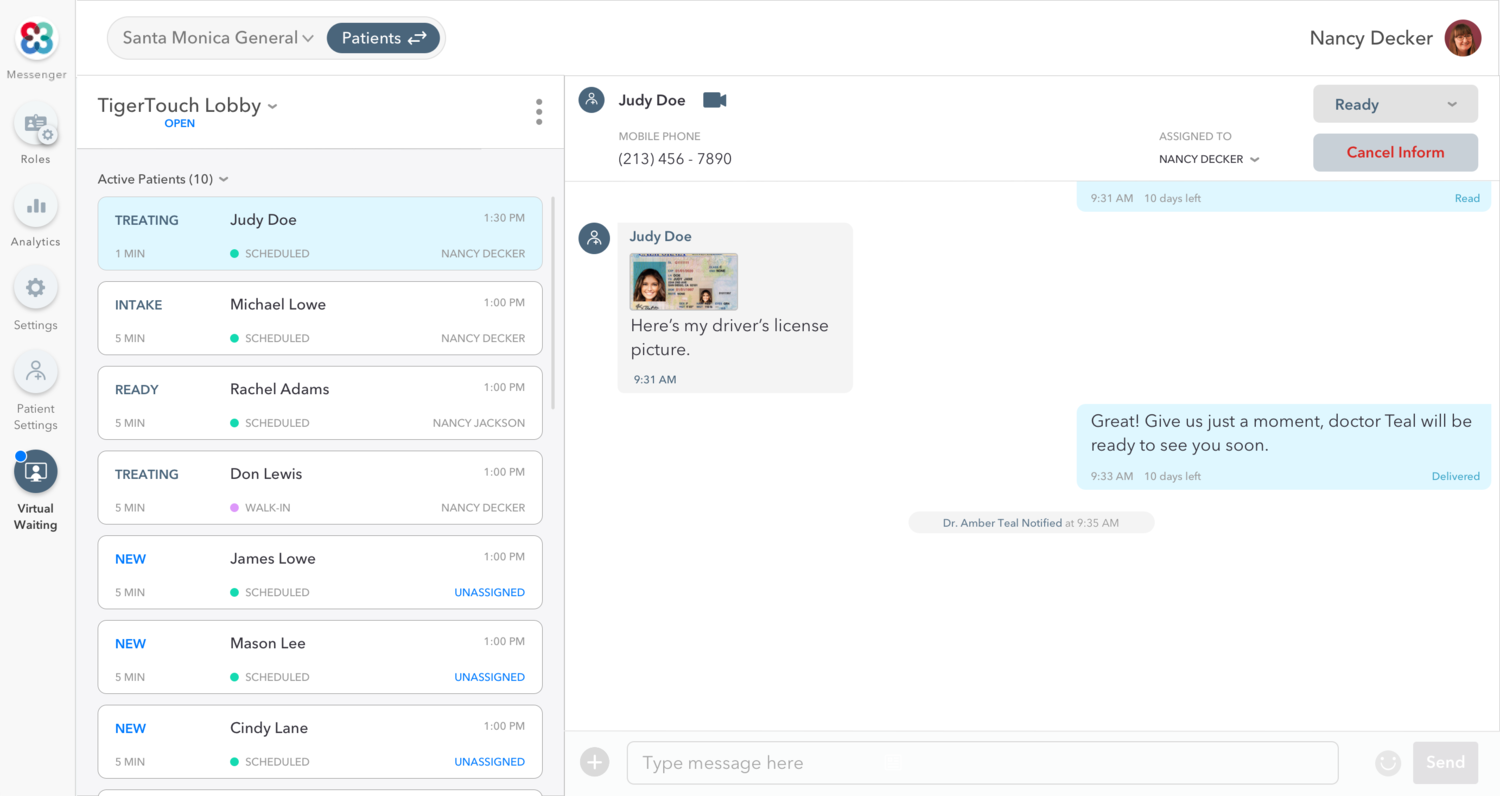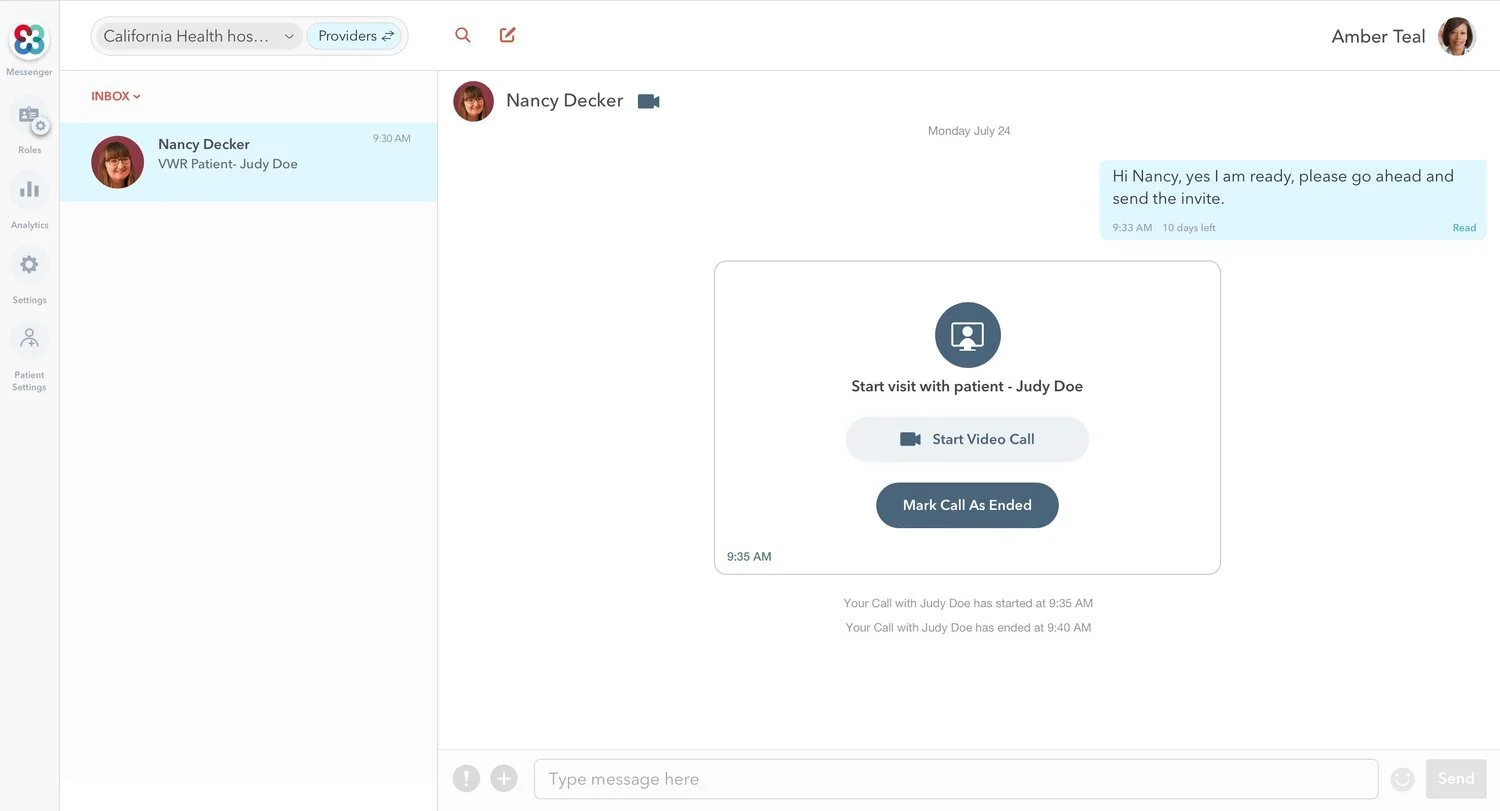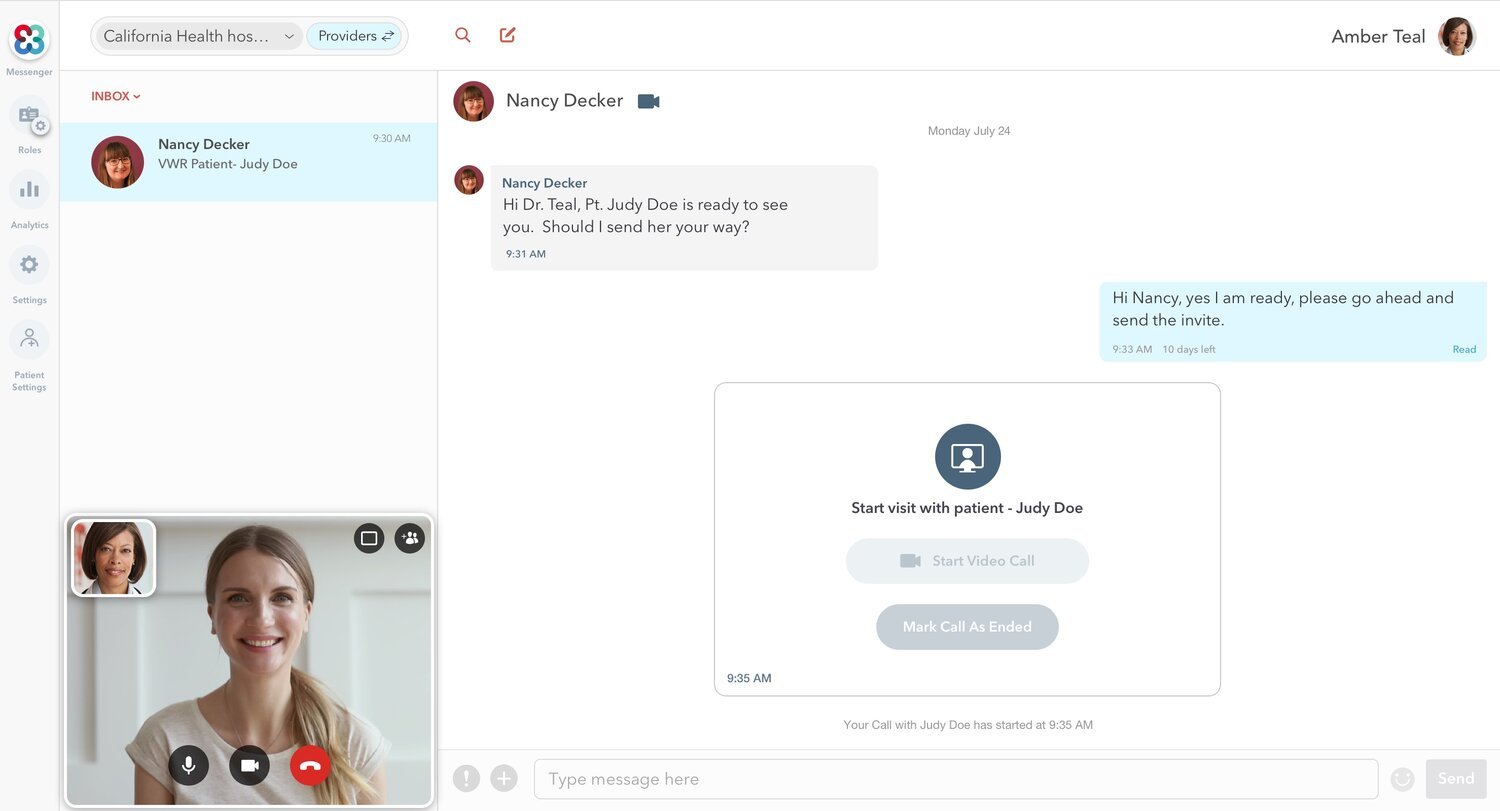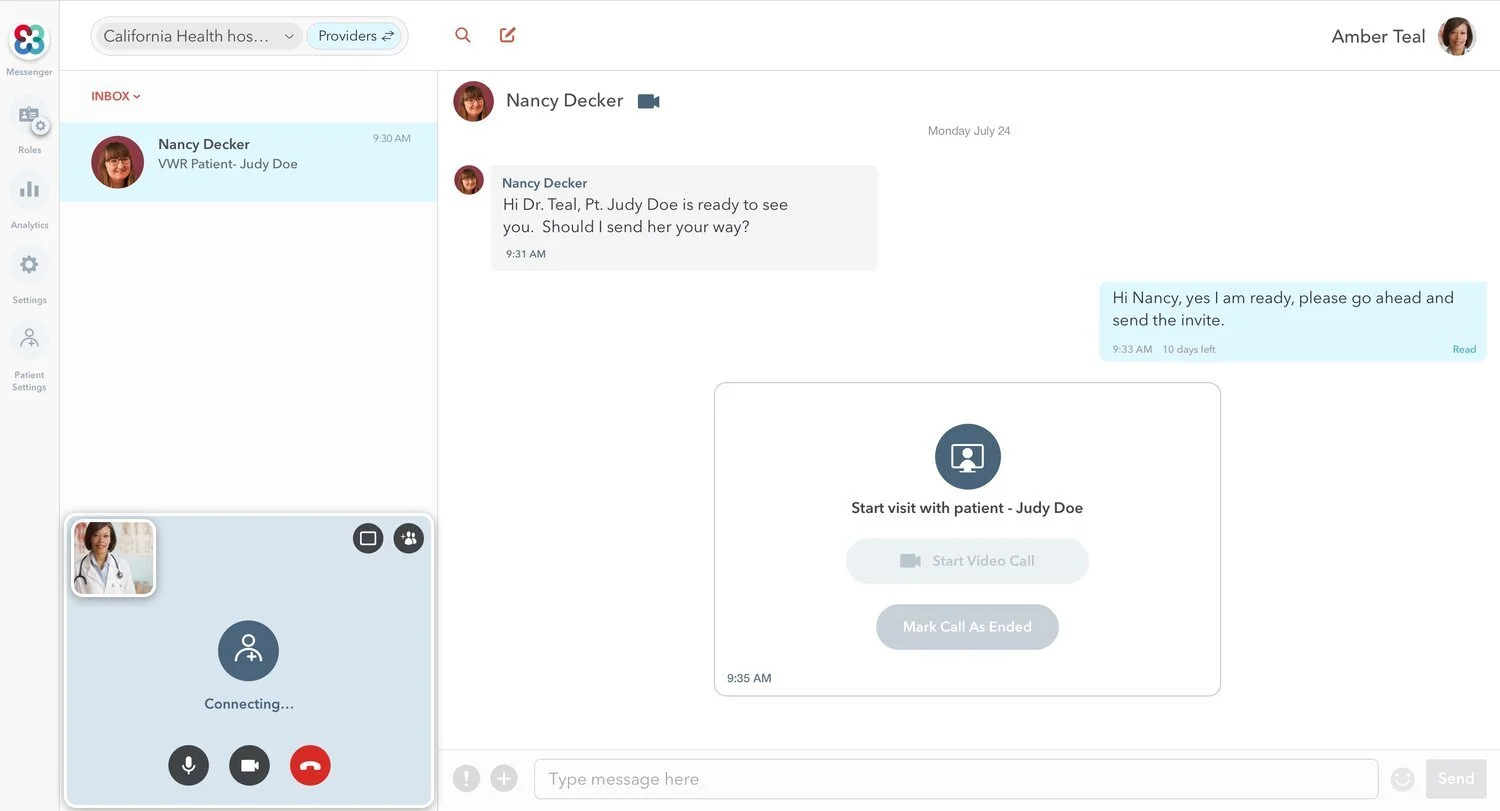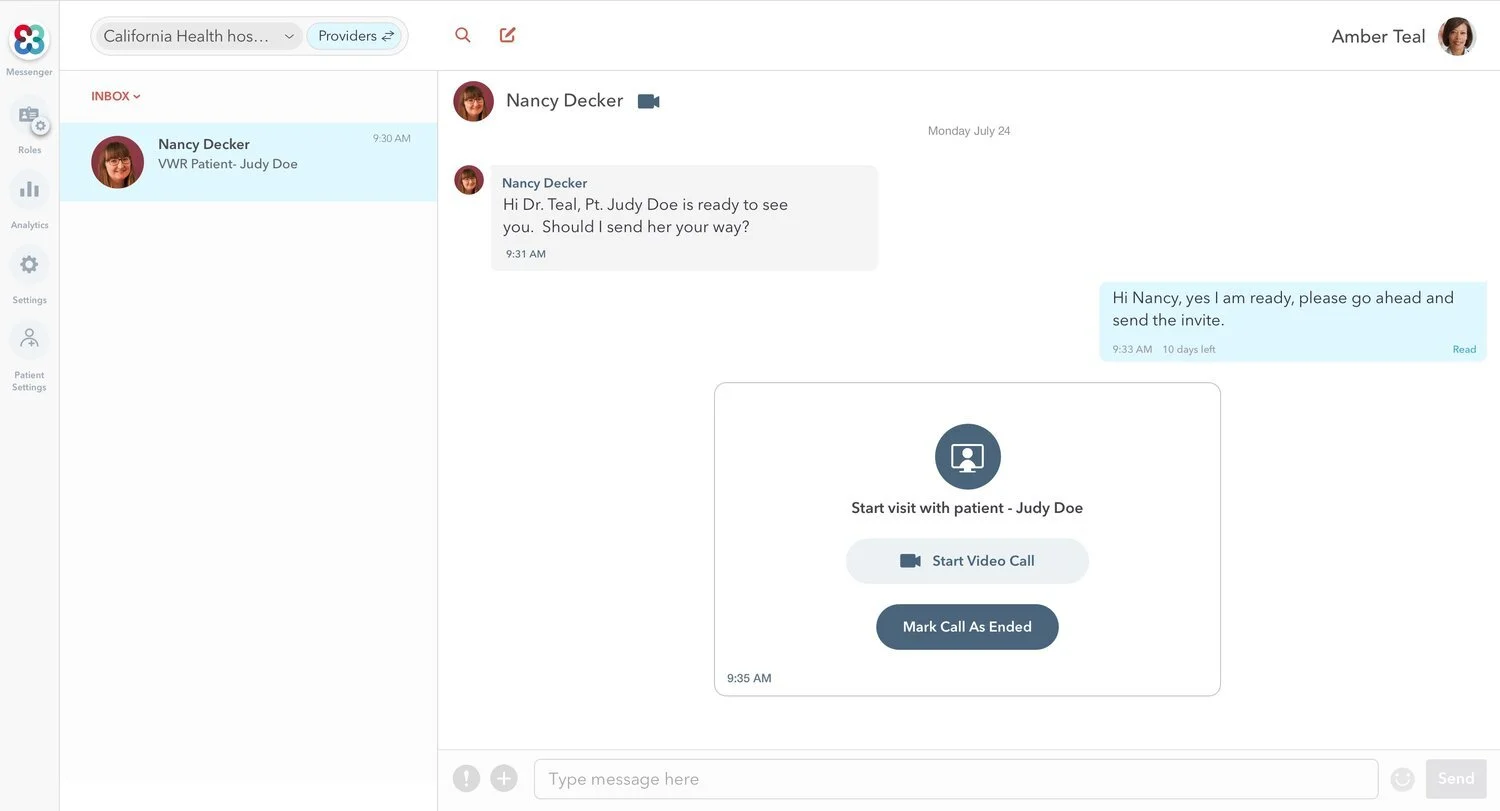TigerConnect — Virtual Waiting Room
I designed the virtual front door that helps support check-ins and triage patients to their appropriate services.
OVERVIEW
Telehealth is simply the use of digital information and communication technologies to access health care services remotely and manage your health care. The Virtual Waiting Room project routes patients to the virtual front door or a practice that helps support check-ins and triage patients to their appropriate services.
As the design lead, I collaborated with 2 product managers, Web/ iOS/ android/ Backend managers, VP of product, internal clinical team, and external healthcare partners.
Leading contextual interviews & synthesis.
Planning & scope definition with the VP of product & product managers to spec out MVP.
Conduct research on competitors & industry best practices.
ROLE
Lead Product Designer
TIMELINE
2020 Q4 (2 Weeks of research, 4 Weeks of Design)
OUTCOMES
23% increase in SMB & Enterprise clients
192% increase in revenue per 1,000 visitors
85% adoption of VWR feature
LINKS
Context
People Problem
Even aside from the impact of covid 19, the biggest pain point involving both patients & medical professionals is the need for a more efficient intake process. Incredible amounts of resources are being wasted in the form of time, staffing, and inferior physical waiting experience. Routing patients to the virtual front door solves that problem by helping check-in and triage patients to their appropriate services easier.
Business Goals
To continue to impact the healthcare communication & collaboration space and grow, it’s imperative to address the enterprise clients’ need of:
Managing resource allocation for patient visits.
Reducing no-shows.
Improving patient satisfaction by offering more convenience.
Healthcare industry's need for patient-initiated, real-time communications.
Product Solution
TigerConnect, as a telehealth business with over 3M users using the app, can provide medical practices to help patients set up and meet their medical needs virtually within the preexisting apps (web, mobile web, iOS, and android platforms).
Creative Strategy
I began this project in close partnership with my lead product manager early on to define the problem statement & hammer out the product specs together. In my discovery phase, I’ve started putting together relevant personas, and pain points, validating features, and anticipating any constraints we’re working with.
I like communicating my design strategy clearly with all my product stakeholders, engineering partners, and clinician teams with visuals as early as possible:
Once I validated the possible outcomes with the team, it was time to narrow down the actual scope of this sprint. I began mapping out the high-level Information Architecture to inform the ongoing conversation among the cross-functional teams. The goal of the project, the results of stakeholder interviews, and resource constraints informed me the direction of this design had to be lean and rely on linear user flows rather than a more robust, user need-driven, flexible approach.
It was then time to flesh out an accurate representation of IA and narrow down our features.
I’m navigating around a lot of ambiguity (time constraints, limited engineering resources, tech debt, etc..) at this stage, so I moderated between cross-functional leads to get buy-ins before I can start creating design prototypes. The following diagram was used to clarify our commitments from engineering, product, and design.
Research
I’ve worked with numerous high-performing Product teams in my career and it’s always a challenge to get buy-ins from the Product Management team to secure time for research & resources. I had to fight hard to convince my team to allocate the first 2 weeks of my time to be spent on the research to validate a few crucial assumptions:
There are 3 major personas we’re building this product for and even with all the legacy knowledge we have, the balance is unclear. In other words, we need to validate our problem further.
Scalability validation- we’re building this product during the quarantine. This product experience must be consistent & effective even after the quarantine is over in the future.
Office visits to meet patients- the overall processes, best practices, and wins & shortcomings.
Patients receiving therapy- major paint points and insights.
Then I’ve conducted expert interviews with the following 3 cohorts:
Internal Teams
Our internal teams gave me great insight into use cases and validation of the design hypothesis.
Clinical Teams
Sales (Enterprise & SMB)
Professional Services
Practice Management
Virtual Waiting Room
Appointment Scheduling
Payments
Tele-Health Visits
Answering Services
Customers
Our customers provided detailed insight that helped the product team solve the complex workflows.
LifePoint
Tufts University
Lowell
Allergy Partners
Here are some major takeaways:
Overall TigerConnect patient’s experience was poorly lopsided compared to the provider experience.
I validated that Thru-put or tracking efficiency of the visits is crucial in improving the patient experience: how long in the registration process, how long did the patient wait before receiving the shot, and what was the total visit time of the patient?
Telehealth insight: some doctors want to initiate the call with patients
themselves instead of relying on nurses or the front desk.
Next, I conducted a Competitive Analysis to validate the opportunity areas.
Tele-Health
Virtual Waiting Room
Tele-Health Visits
Patient Messaging
Payments
Appointment Reminders & Scheduling
Product Advisory Boards
Product Advisory board included Harish Panchal, Susan Stallings, Charles Bloom, Bella Okelberry, Dr. O’Connor, Peggy Denness, and Don Ryan.
Pre-Development
During Development
Final Sign Off
Patient Engagement
Virtual Waiting Room
Direct & Group Patient Messaging
Family & Caregiver Messaging
Video Calling
By digging deep into the competitive landscape, I made the recommendation to align our product within the Enterprise & Telehealth market based on the following reasons:
Product scalability in the market
High consumer demands
Research findings informed me to focus on solving the following items:
Streamlined patient intake & check-in by offering a direct line of communication with patients in your Virtual Waiting Room.
Enabling patient-initiated engagements by allowing any patient to enter your designated room.
Managing patient throughput via the dashboard with all the active patients.
Coordinating post-encounter activities by collecting additional information, scheduling for the next visit, discussing pharmacy locations, and more.
Creative Solution
Once I synthesized the research findings, I broke them down into actionable feature plans:
Dedicated Virtual Rooms
To manage patients by doctors, specialists, and admin departments.
Status Indicator
To facilitate workflow and deliver patient care
Dashboard View
To track and engage with patients leveraging preexisting communication platform.
Patient Intake Flow
To support patients and their reason for visits as well as collect essential identification data.
Patient Assignment
To transfer patients between providers and the front office and offer a smooth transition.
Dashboard Team Assignment
For notifications and alerts from VWR activity.
Patient Onboarding
Patient access delivery can happen either via text message link or QR code. Once a patient has a valid link/ access, she must fill out all the information in the onboarding screens, this includes selecting their reason for the visit. If patients don’t have a specific reason for visits, they can select general inquiry.
Virtual Waiting Room Dashboard
Providers can communicate with patients within the waiting room by text or video. Users can assign patients to specific staff members and update patient statuses to see their state of triage or service.
Virtual Waiting Room Customization
Organizations can build multiple Virtual Waiting Rooms and grant users access to any room.
Virtual Waiting Room Provider Engagement
Providing physicians can get clear invitations from the clinical staff to their messaging inbox when the time comes to see their patients.
Edgecase Coverage
Open & close process and communication.
Organization admin room creation flow.
Error state handling.
Patient visit completion handling & resurrection.
Incoming patient sorting & handling.
Compelling bot experience during intake & exit.
iOS & android platform notification handling.
Visitor access expiration point & process.
Descope features & priorities due to resource constraints.
Outcomes and Conclusion
The Virtual Waiting Room project was one of the first telehealth initiatives launched from TigerConnect and was received by the entire internal organization & major clients with excitement.
Over one year, multivariate testing and new feature implementation resulted in:
23% increase in SMB & Enterprise clients in direct correlation to the VWR feature
192% increase in revenue per 1,000 visitors
20% increase in MAU
14% increase in organic traffic to clients’ offices
This was an Extra Large T-Shirt item in terms of investment, scope, and impact on the direction of TigerConnect and it was an exciting project to be a part of. I’m proud of challenging the status quo of the design team’s comfort level and pushing the design forward by setting better UI/UX standards. I empowered my immediate product team to develop a better process for research and UX best practices. Learning more about release planning, and negotiations with engineers & the product team on delivery state refinement was engaging new lessons for me as well.
The biggest challenge for me was the scope creep. The team was relatively at an immature stage with its processes, so it was imperative to prevent the project scope from getting out of hand. I put a lot of intentionality behind preventive measures:
Prioritizing design features in a sequential order & documenting it.
Communicating the design project timeline on our team Kanban board often and making the project timeline easily available to the PMs, engineers, and leadership.
Partnering closely with project managers to manage expectations within the current scope.
Lastly, the biggest win for me was gaining a fresh perspective on communication platforms. It comes down to delivering the right information to the right person at the right time. Internalizing this truth after trudging through the murky complexity of the health tech product stream opened my eyes and I gained newfound confidence in handling complexity in product design.

